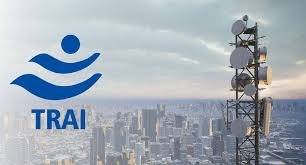SUMMARY POINTS
- TRAI Chairman Anil Kumar Lahoti advocates for uniform media regulation.
- Points out unfair legal treatment between cable TV and digital content platforms.
- Govt recently told Supreme Court it’s working on norms for OTT and social media obscenity.
- A PIL against vulgar OTT content triggered legal and policy discussions.
- Platforms may soon face stricter content codes, age filters, and ethics rules for creators.
TRAI Urges Equal Rules For All Media
At the World Audio Visual & Entertainment Summit (WAVES) in Mumbai, TRAI Chairman Anil Kumar Lahoti made a strong case for consistent legislation across both digital and traditional (linear) media platforms.
He emphasized how TV and cable networks are governed by strict rules like the Cable Television Regulation Act, while OTT and digital media operate under self-regulation. Lahoti questioned this disparity, stating:
“There is no reason why one media should be regulated with one set of rules, while others follow self-regulation. Regulation should be media-agnostic.”
This signals a push for a common legal framework that treats all content delivery formats equally—whether it’s a news channel or a YouTube series.
ALSO READ: PM Modi Distributes 51,000 Appointment Letters at 15th Rozgar Mela
Why Is This Needed Now?
The discussion isn’t in isolation. Just days ago, the Union Government informed the Supreme Court that it is working on new guidelines to tackle obscene content on OTT platforms like Netflix, Amazon Prime, and social media apps like Instagram, X (Twitter), and YouTube.
Real-World Trigger:
A Public Interest Litigation (PIL) filed by journalist Uday Mahurkar raised concerns over objectionable OTT content, calling it harmful and unchecked. The case was taken seriously by the SC, which then sent notices to major platforms and the Centre.
This movement gained traction after the controversial YouTube show ‘India’s Got Latent’ by Samay Raina, which sparked public outrage over its content.
What Is the Government Planning?
In response, the Ministry of Information and Broadcasting (MIB) directed platforms to:
- Follow the IT Rules, 2021 which include digital media ethics guidelines.
- Categorize content by age (like 13+, 16+, 18+) and
- Install parental controls to block adult content from children.
Moreover, there are talks of launching a Digital Creator Ethics Code for influencers with 5 million+ followers, ensuring accountability for online content creators with mass audiences.
Case Study: TV vs OTT Platforms
- TV channels face suspension or fines for airing adult or fake content.
- OTT platforms, however, often feature explicit shows like Ullu originals or adult-rated Netflix series with minimal or delayed censorship.
- This leads to an imbalance in how media impacts viewers—especially children and teens—with OTT content being more accessible and less regulated.
What Does TRAI Want?
TRAI is pushing for:
- Unified legislation that eliminates the “unfair advantage” of digital platforms.
- Level playing field in media regulation—content should be judged by what is shown, not where it is shown.
Why This Matters To You
As a viewer, creator, or parent, these changes could affect:
- What you see online
- How content is filtered and labeled
- What platforms need to do before launching shows
This shift could make digital spaces safer, but it also raises debates around freedom of expression vs moral policing.



